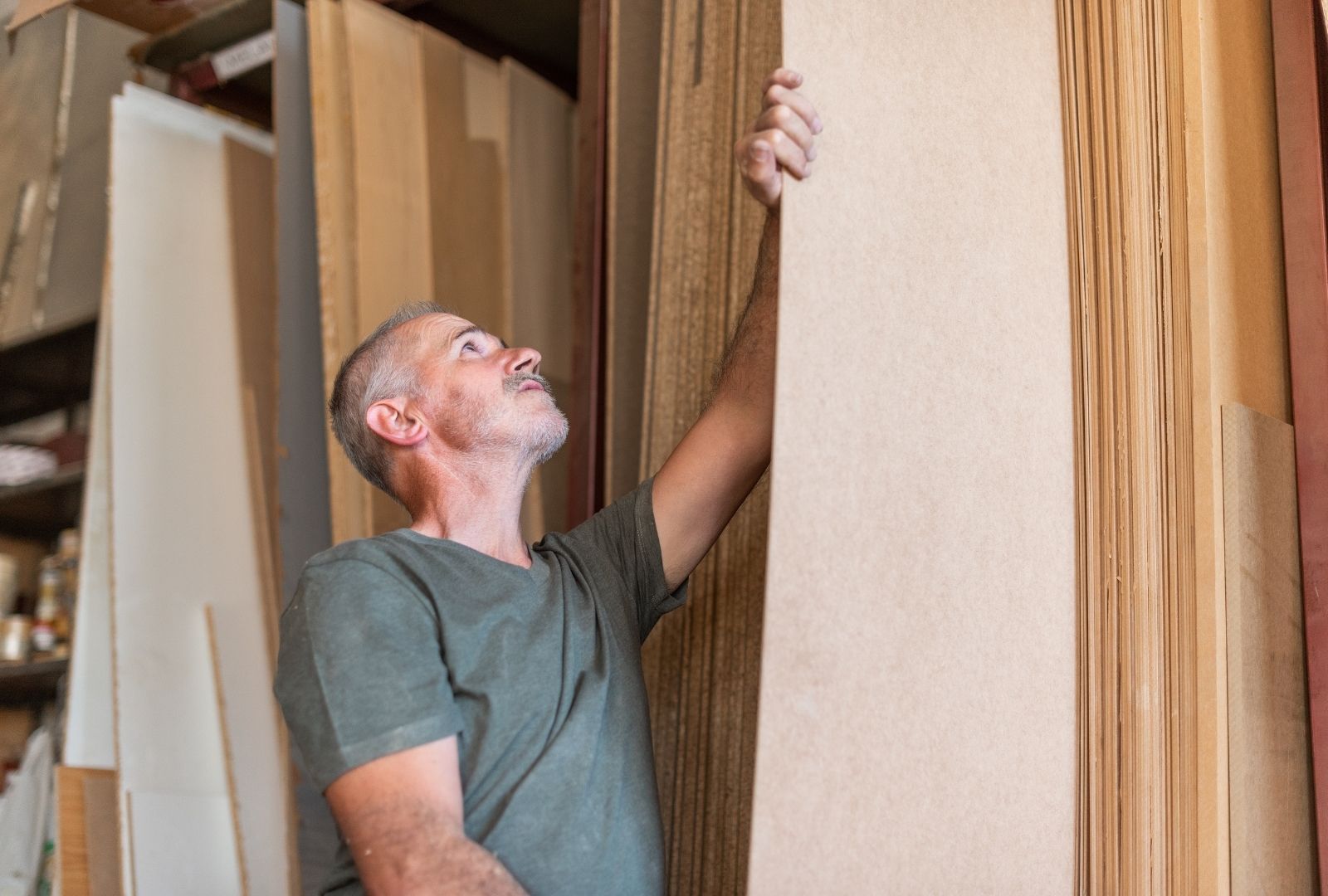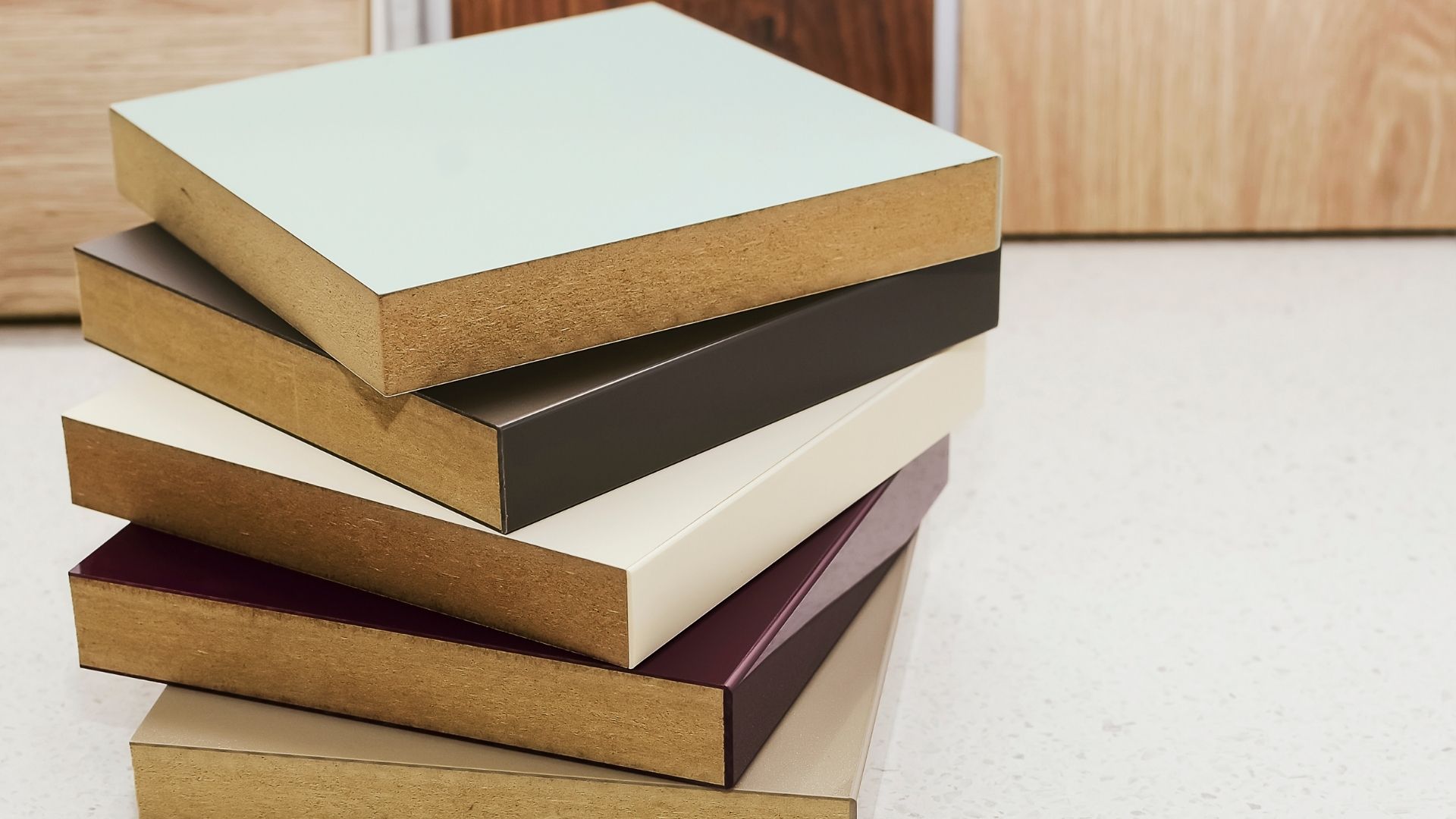How to Choose the Right MDF for Your Project

Selecting the perfect MDF is crucial whether you’re working on furniture and cabinetry, office furniture, or home improvements like a kitchen cabinet. With so many MDF options available, understanding the different types of MDF, their density, thickness, and grades can help you make the right choice for your project.
What is MDF?
Let's cover the basics. Medium-density fibreboard, or MDF, is an engineered wood product made from wood fibres, resin, and sometimes wax. MDF is known for its smooth surface, consistent density, and versatility, making it a popular choice for furniture and cabinetry. Unlike solid wood, MDF boards provide a uniform surface free of knots and grain, which is perfect for painting, laminating, or veneering.
MDF is versatile, and MDF can be used in a wide range of applications, including cabinetry, furniture making, shelving, moulding, and decorative panels. MDF is commonly used as an alternative to solid wood, offering engineered wood solutions for projects where uniformity and precision are important. For a deeper dive into what MDF is and how it’s made, check out our detailed guide.
Why Choosing the Right MDF Matters
When selecting MDF, it’s important to consider the specific needs of your project. Using the right MDF board ensures durability, smooth finishes, and long-lasting performance. The ideal MDF depends on factors like density, thickness, and whether the project will be exposed to moisture or high temperatures.
Choosing standard MDF panels might be suitable for indoor furniture, while moisture-resistant MDF or fire-rated MDF is better for kitchens, bathrooms, or office spaces where durability is essential. Veneered MDF is another option if you want the look of real wood without the imperfections or cost.
Types of MDF and Their Uses
Understanding the types of MDF boards helps you choose the right one for your needs. Here’s a breakdown:
- Standard MDF: Standard-grade MDF provides smooth surfaces ideal for cabinetry and furniture that is not exposed to moisture. Standard MDF provides consistent thickness and density, making it easy to work with for painting or laminating.
- Moisture-resistant MDF: Moisture-resistant MDF is ideal for furniture in areas like kitchens or bathrooms. It reduces the risk of MDF swelling when exposed to humidity.
- Fire-rated MDF: Fire-rated MDF is used in areas requiring additional safety, such as commercial office furniture.
- Veneered MDF: Adds a wood veneer finish for aesthetic appeal while maintaining the smooth surface and versatility of MDF.
- Melamine MDF: Pre-laminated MDF sheets that are durable and ready for use in cabinetry or furniture production.
- Exterior grade MDF: Suitable for projects exposed to environmental elements, though care must still be taken to ensure proper sealing.
Each MDF type is a type of engineered wood product designed to make it ideal for specific applications. Selecting the right MDF ensures you get the best results while avoiding problems like warping or swelling.
Factors to Consider When Selecting MDF
When choosing the right type of MDF for your project, consider these key factors:
Density and Thickness
MDF offers various density levels, which affect durability and workability. Medium-density fibreboard provides a balance between strength and ease of cutting, while high-density MDF is more durable and can support heavier loads. The thickness of your MDF sheets will also affect its structural integrity and suitability for certain applications.
Moisture Resistance
If your project will be exposed to moisture, you'll want to opt for a moisture-resistant MDF. This is especially important for kitchen cabinetry, bathroom vanities, or office furniture in humid environments that can cause MDF to swell and deform over time.
Surface Finish
MDF boards provide a smooth surface that is ideal for painting, laminating, or veneering. For high-end finishes, veneered MDF or melamine MDF may be preferable. MDF is also easier to shape than solid wood or plywood, making it ideal for furniture making and custom cabinetry.
Project Requirements
Standard MDF panels are great for most internal furniture and cabinetry, offering a smooth surface and consistent density for easy finishing. For projects that require extra durability, choosing fire-rated MDF or moisture-resistant MDF provides added protection and longevity, making it easier to achieve high-quality results.
Price and Availability
MDF price varies depending on grade, type, and thickness. Selecting MDF that balances quality and cost is essential. Worldwide Timber Traders offers an extensive range of MDF products including standard MDF, moisture-resistant MDF, veneered MDF, and exterior grade MDF, helping you make the right choice for any budget or requirement.
MDF Compared to Other Wood Products
When choosing materials for furniture and cabinetry, it’s helpful to understand MDF vs plywood and MDF vs solid wood. MDF boards are made from wood fibres combined with resin, giving them a smooth, uniform surface that’s ideal for painting or veneering. In contrast, solid wood can have knots and grain, which may affect the finish and require extra preparation.
Compared to plywood, MDF is denser and easier to cut or shape, making it ideal for internal furniture, mouldings, and decorative panels. While plywood offers greater structural strength and moisture resistance, MDF provides a precise, consistent surface at a lower cost. Veneered MDF can also replicate the look of real wood without imperfections, offering a versatile option for a range of interior projects.

Selecting the Right MDF for Your Project
With so many MDF options available, selecting the right MDF comes down to understanding your project needs, the environment, and the finish required. Here’s a quick guide to help you choose the right MDF:
- For indoor furniture and cabinetry, standard MDF or veneered MDF works best.
- For moisture-prone areas, choose moisture-resistant MDF.
- For fire-sensitive applications, use fire-rated MDF.
- For high-end finishes, veneered MDF or melamine MDF provides a professional look.
- For exterior applications, exterior-grade MDF should be used, with a sealant applied for optimal protection.
These criteria can help you select the right MDF for your project, ensuring durability, ease of use, and high-quality results. MDF offers significant advantages over other engineered wood products, including a consistent thickness, smooth surface, and exceptional versatility.
Making the Right Choice
With the right type of MDF, you can create furniture, cabinetry, and decorative projects that are both durable and visually appealing, giving your work a professional finish that lasts.
With an extensive range of MDF products available, understanding the different types of MDF, grades, and applications will help you make the right choice for your project. By considering density, thickness, moisture resistance, and surface finish, you can confidently choose the ideal MDF and achieve best results for your furniture and cabinetry needs.
For quality MDF boards, MDF sheets, and a full range of MDF products, Worldwide Timber Traders provides solutions for every MDF project. Contact us today if you need guidance choosing the right MDF for your needs.
Related articles

Blog title heading will go here

Blog title heading will go here


